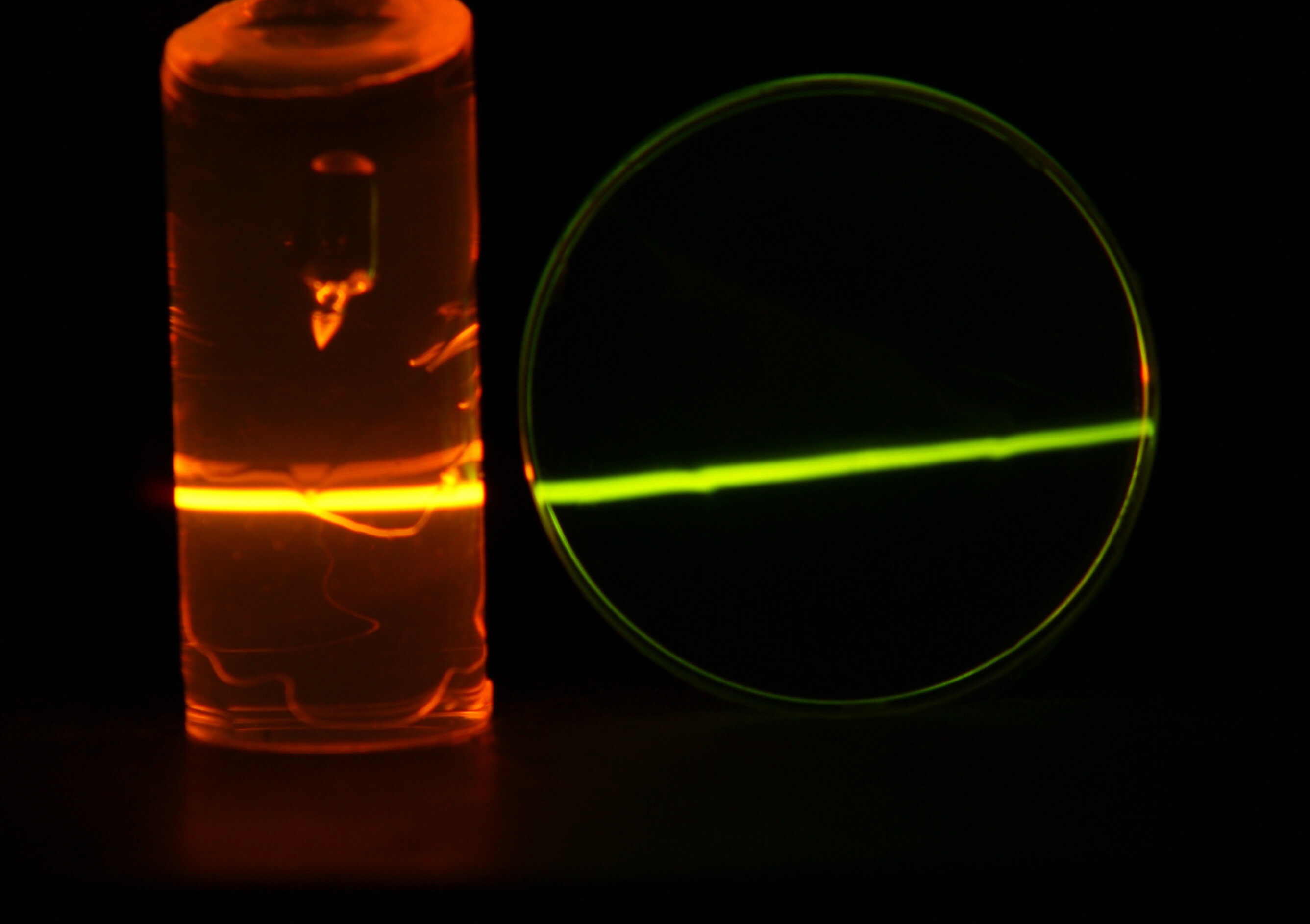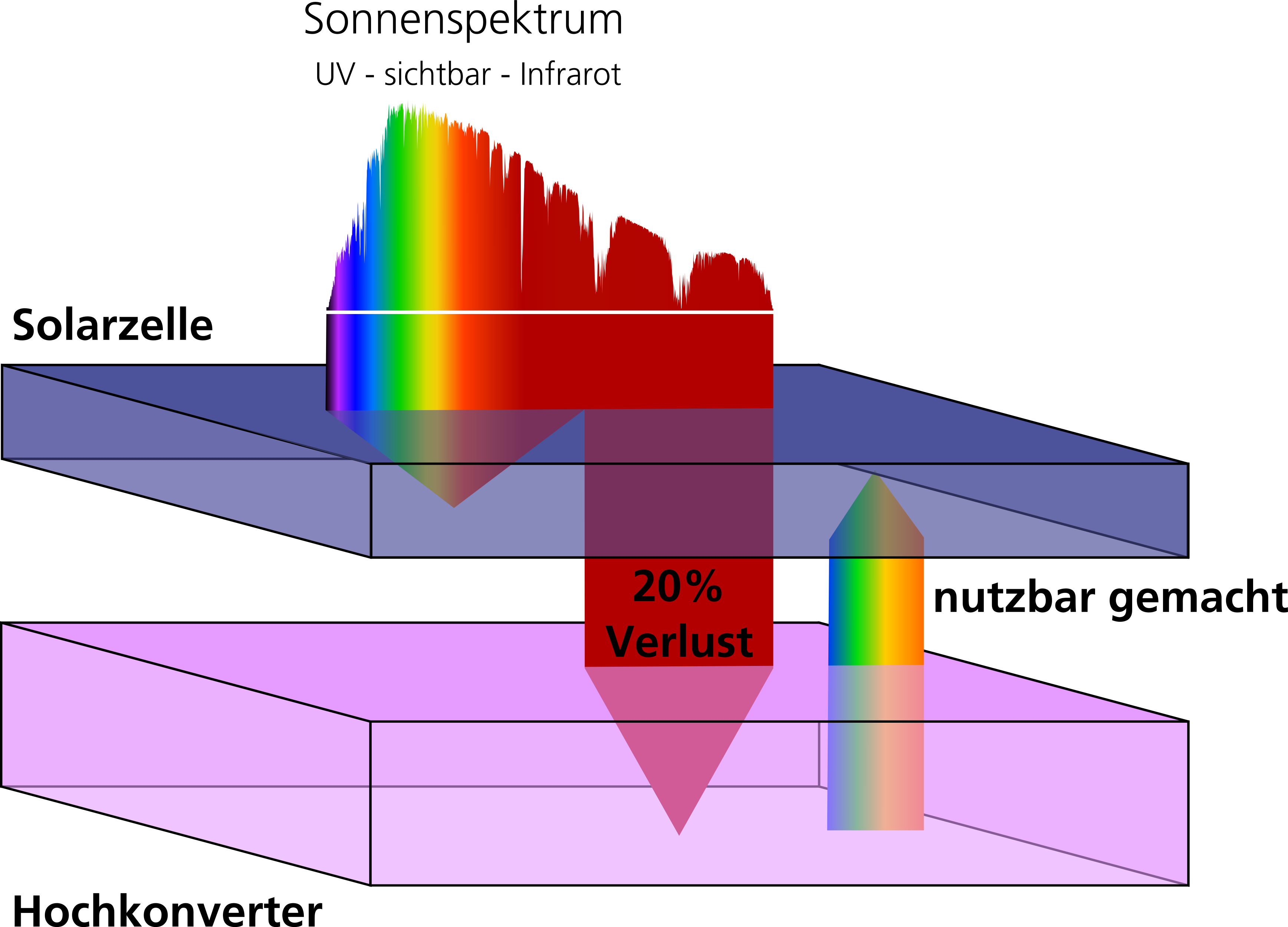Press Release #18
Stefan Fischer receives Best Student Presentation Award from 39th IEEE Photovoltaic Specialists Conference - Upconversion allows silicon solar cells to make use of infrared light
For his presentation on increasing the efficiency of silicon solar cells through upconversion, Stefan Fischer, Ph.D. student at Fraunhofer ISE, received the Best Student Presentation Award at the 39th IEEE Photovoltaic Specialists Conference (PVSC) in the category “Fundamentals and New Concepts”. Every semiconductor material has an inherent upper efficiency limit for the conversion of sunlight into electrical energy. By employing so-called upconverters, these limits can be overcome and higher solar cell efficiencies can be achieved. In silicon solar cells, upconverters modify the infrared part of the solar spectrum so that the solar cell is able to use that part. Stefan Fischer presented this topic at the IEEE PVSC Conference in Tampa, Florida, where he was awarded the prize on June 21st, 2013.


Among scientists in the field, the IEEE conference is regarded as the leading international photovoltaics conference covering the latest developments in novel solar cell concepts.
For over 30 years, Fraunhofer ISE has been successfully working on increasing solar cell efficiencies. Among other things, the Freiburg-based research institute develops new cell structures and performs research on photon management, that is, the optimized control and use of incident photons. The aim of photon management is to increase the solar cell efficiency by splitting or modifying the solar spectrum so that more sunlight can be absorbed by the solar cells.
One way of achieving this is upconversion. This process leads to increased solar cell efficiencies by widening the usable range of the incident solar spectrum. Therefore, upconverters help to increase the electrical yield. The theoretical limiting efficiency of silicon is about 30 percent. With upconversion, this limit can be increased to 40 percent. The researchers in Freiburg achieved a new world record for converting infrared light into light useful for the energy conversion in silicon solar cells using bifacial solar cells produced at Fraunhofer ISE and upconversion material from their partners Karl W. Krämer of Berne University in Switzerland and Bryce S. Richards of Heriot-Watt-University in Edinburgh, Scotland. The upconverter material, a microcrystalline sodium yttrium fluoride powder, in which part of the yttrium is replaced by erbium, was used. The powder was embedded in a polymer for adhesion to the solar cell surface.
The award-winning presentation is entitled ”Upconversion of Silicon Solar Cell Devices for Efficient Utilization of Sub-band-gap Photons under Solar Radiation”. In his presentation, Stefan Fischer explained in a very clear way how an upconverter applied to the rear side of a silicon solar cell can appreciably increase the energy output. “I am very honored to have received this award. It also keeps me motivated to persevere in my research”, remarks the happy winner. “Together with our partners, we will continue to intensely work on upconversion using this method to achieve further increases in the solar cell efficiency.” Dr. Jan Christoph Goldschmidt, supervisor and team leader of “New Solar Cell Concepts” adds: “Particularly now during the difficult situation presently experienced by the photovoltaic industry, continued research on innovative solar cell concepts is especially crucial in order to secure Germany’s long-term competitiveness.”
Stefan Fischer is a scholarship holder from the Deutsche Bundesstiftung Umwelt DBU. Additional funding for the work on upconversion was received by the EU NanoSpec project and by the German Academic Exchange Service (DAAD).
Last modified: